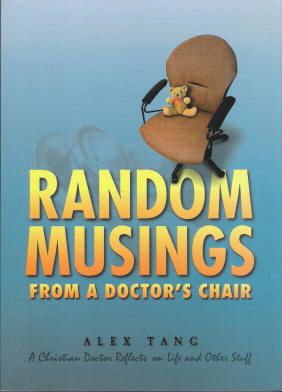Earth, Wind, Water, Fire
By Dr Alex Tang
Laurie Beth Jones, author of Jesus, CEO and a successful business consultant has written an interesting book on personality profiling, The Four Elements of Success (2005, Thomas Nelson). Personality profiling is not new. Many of us are familiar with the Myers-Briggs Type Indicators and DISC relational profiling tools. Others will remember Tim Lahaye’s books on transforming our personal temperament such as Spirit-Controlled Temperament and Transformed Temperaments. Another useful personality profiling tool is the enneagram. All these are time tested personality profiling tools.
What is new and distinctive about Jones’ Path Elements Profile (PEP) is her use of the four elements: earth, wind, water and fire to describe the human personality. Under these four elements, there are 16 possible personality blends: earth, earth/wind, earth/water, earth/fire, water, water/wind, water/earth, water/fire, wind, wind/water, wind/earth, wind/fire, fire, fire/wind, fire/earth and fire/water. Each represents a personality type. In her book, Jones has documented the various types.
Generally a person with a fire personality is one whose strengths are being exciting, passionate, intense, and confrontational and but has a tendency to burn out easily. Fire personalities dislike boredom, sameness, routine, boundaries, sharing the spot light and apathy.
Earth personality includes stability, predictability, orderliness and long term planning. The earth personality weaknesses are changes, sudden movement and too much spontaneity.
Water’s strengths include its vitality, people centred, flexibility and team player. Its weaknesses are its need to please people, difficulty in saying no and tendency to lose its identity in others.
Wind personalities are spontaneous, forward movement and the ability to move others. Wind people like changes, new ideas and upward and inspiring things. Their weaknesses are their restlessness, impulsiveness and like the wind, their ability to stir things up and then leave.
The aim of this elemental profiling is to discover how people can work together in teams. For example, teaming a ‘fire’ with ‘water’ will result in confusion while a team full of ‘earths’ will need a ‘fire’. The use of the elements may sound New Age which Jones assures her readers that it is not so. However it will appeal to many in Asia who are familiar with the increasing popularity of Feng Shui. I find it fascinating that Jones uses the four elements not only to explain the various human personalities but also for developing compatible team building. It sounds interesting and may be a powerful tool to understand human beings and human relationships in a community.
Soli Deo Gloria
Labels: Book Review















0 Comments:
Post a Comment
<< Home